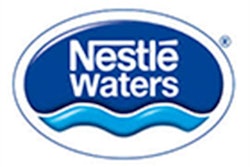Cutting costs and accommodating production schedules are two of the major factors driving the purchase of used equipment in the food manufacturing marketplace. On average, a manufacturer can save 25 to 50 percent when compared against purchasing new equipment. Additionally, used equipment is readily available, which means it carries the potential to cut a number of weeks of lead time and dramatically compressing the project schedule.
However, meeting the manufacturer’s operational, food safety and personnel safety criteria is no small challenge when utilizing used equipment. It requires an effective strategy that includes:
- A thorough risk assessment process, including a detailed written scope of work for equipment modifications.
- A site survey to confirm the accuracy of as-built drawings and to identify potential installation challenges.
- Stakeholder participation from key areas of the plant, as well as accurate data, insight, collaboration and flexibility to execute the project.
- In most cases, 3D modeling of the installation helps ensure that the construction manager and contractors can quickly resolve any issues.
Case Study
A breakfast food manufacturer identified a new product for manufacture in the United States. With a commitment to a launch date that required production to begin within 10 weeks, time was of the essence. With dozens of awards for product quality, the company also has exacting standards of food safety, personnel safety, operational efficiency and integrity.
However, the availability of new equipment proved to be a potential bottleneck. Purchasing a new dryer — at 26 weeks lead time and six weeks installation — was not a realistic option. Fortunately, the company owned an idle gas-fired dryer that was warehoused at an offshore location, and it appeared to meet the requirements for the application.
After obtaining the original drawings and specifications, and reviewing these in the context of the fundamental criteria for the project, including physical dimensions, production rates, utility requirements, food safety criteria and personnel safety criteria, engineers determined that the dryer was a fundamental fit. The equipment was shipped to the U.S. plant, but upgrades would be needed for electrical systems, as well as in meeting food and personnel safety requirements.
The project team initiated a risk assessment process involving stakeholders from food safety, personnel safety and operations to identify their criteria for the dryer. As a further hedge against unwelcome surprises, the construction manager was consulted during the engineering phase of the project for insights about installation, scheduling and value engineering.
Led by SSOE engineers and the company’s in-house experts, the team carefully examined the equipment to identify risks and modifications, which included:
- Some parts of the imported dryer were stitch-welded, creating crevices that increase the risk of microorganism growth. Because the company requires continuously seam-welded construction, the team identified the locations and linear measurement of stitch-welded seams to be upgraded with continuous welding.
- The team identified burner controls and guards that did not meet the owner’s personnel safety criteria. The engineering team specified controls using differential pressure sensors to verify airflow in the ductwork before the burner could be ignited.
- The process team found some critical variances between the used dryer’s operational specs and the company’s criteria. For example, speed modifications and installation of a clean-in-place (CIP) system were required as part of the upgrade.
The project team developed detailed specs for the equipment modifications and reviewed these with the in-house team to ensure accuracy, incorporate additional modifications and obtain approvals.
A survey of the installation site is essential to verify the accuracy of as-built drawings to reduce the risk of unforeseen conditions and costly change orders that affect project cost and schedule. Project teams sometimes overlook potential variances in underground utilities, column interferences and ceiling heights. For example, if door openings or ceiling heights are not correctly shown on the as-built drawings, installation might require use of lower lifting cranes.
This project required complex routing of the dryer’s exhaust ductwork. Engineers investigating the site discovered that some of the column-to-column wind braces had been relocated a few bays off from what was shown in the as-built drawings. Because these variances were discovered early in the process, they were able to reroute the ductwork and incorporate the changes into 3D construction drawings.
3D modeling use is becoming more widespread in process engineering and installation. In this instance, the owner was able to save time, trouble and money by quickly evaluating alternative design schemes and incorporating changes. Furthermore, the ability to display the 3D model on a large-screen monitor in the construction manager’s trailer both clarified and streamlined the installation process.
Modifications and upgrades of an existing dryer saved this company $600,000 — half the cost of a new dryer — and compressed the project schedule by at least 50 percent. Nevertheless, it is never enough simply to save money and time. As this story shows, the project must also identify and mitigate the risks incurred when integrating used equipment.
Jim Swope, PMP, is a Senior Project Manager at SSOE Group. With more than three decades of experience, he is responsible for leading team members throughout the duration of multi-discipline food and beverage projects. His responsibilities include project planning, control procedures and monitoring progress. He can be reached in SSOE’s Portage, MI office or at [email protected].
Dave Young is a Senior Project Manager at SSOE Group. He is responsible for managing the development of projects, from initial concept through design, construction, and facility operation. Dave also has nearly 30 years’ experience and can be reached at [email protected].























